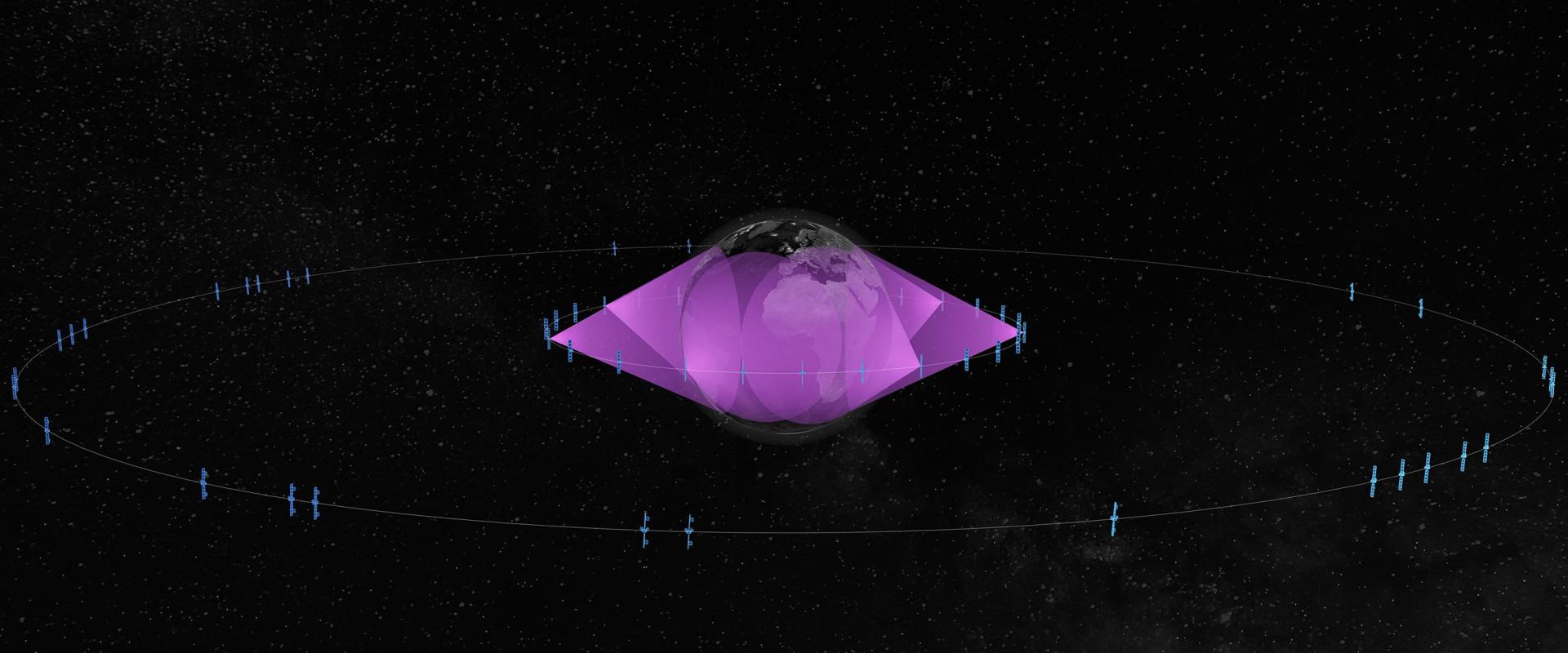How Does Orbital Altitude Affect Satellite Network Performance?

Combining cutting-edge technology with market-proven success
Thousands of satellites orbit the earth – but not all satellite networks are created equal. Satellite services vary depending on which orbit they operate in, making an understanding of each orbit’s characteristics and capabilities critical to decision-of which satellite network is right for you.
Satellites orbiting the Earth fall into one of three categories:
Geostationary Earth Orbit (GEO) satellites orbit at 35,786 km above the surface of the earth. They match the Earth's rotation as they travel, remaining above the same point on the ground. Hundreds of GEO satellites are in orbit today, delivering services such as weather data, broadcast TV, and some data communications. Due to their size and altitude, only three GEO satellites are required to cover the entire surface of the earth.
Medium Earth Orbit (MEO) satellites occupy the space between 5,000 and 12,000 km above earth and are typically used for GPS and other navigation applications. More recently, these constellations have also been deployed to deliver reliable connectivity services to government agencies, commercial enterprises, and remote areas where laying fibre is not viable (such as cruise, airplanes and offshore platforms). Their lower altitude enables lower latency compared to GEO satellites but necessitates more spacecraft – between eight and 20 – for complete coverage.
Low Earth Orbit (LEO) satellites operate between 850 and 2000 km. This orbit is densely populated with thousands of satellites in operation today, primarily addressing science, imaging, and low-bandwidth telecommunications needs, including the Hubble space telescope, military observation satellites and Earth Observation missions. While LEO satellites deliver the lowest latency of the three orbits, LEO networks require an exponentially higher number of satellites for full coverage, and atmospheric drag reduces satellite lifespan.
New Opportunities with MEO
SES had already established our leadership role in the GEO market when we acquired MEO operator, O3b Networks, in 2016 a move that allowed us to expand our global reach and provide an unprecedented level of connectivity to the world’s most underserved regions. Today, we operate 20 satellites in medium earth orbit, enabling fibre-equivalent broadband in a wide range of scenarios:
- Enabling 4G LTE services for residents of Gilgit-Bastistan, a Pakistani territory characterised by harsh weather and a mountainous and rocky terrain
- Powering Carnival Corporation’s Ocean guest experience platform, which allows passengers on its Princess Cruises MedallionClass ships to open cabin doors, order food and beverages, book excursions and navigate the vessel via a wearable RFID tag connected to a network of sensors throughout the ship
- Supporting real-time collaboration across MODEC’s fleet of floating production, storage and offloading vessels off the coast of Brazil for improved production and enhanced operational efficiency
SES is taking that success to the next level with O3b mPOWER, our next-generation MEO constellation. Designed with unmatched system-level flexibility to support bandwidth-intensive and latency-sensitive cloud workloads, O3b mPOWER delivers dedicated, private connections just one hop away from cloud service providers. Furthermore, it is designed to minimise size and power usage with advanced digital payload technology and resource control software, so these satellites ensure the services you receive today can be economically scaled up—both in speed and number of customers served.
O3b mPOWER is built on commercially proven technology and based on a market-proven business case. For our customers, this means eliminating business and operational risk, and having the confidence to move their business growth forward and modernise their networks. It also leverages software innovation to deliver cloud-scale service level agreements (SLAs), automate service delivery where and when it’s needed, and seamlessly interoperate with existing networks to accelerate time to market for our customers
What about LEO?
The last few years have seen an emergence of interest in LEO satellites, with LEO operators promising low-latency connectivity that may even outperform terrestrial networks. While latency is indeed a major determiner of data performance, LEO’s limited coverage, complex inter-satellite networking, and elaborate ground infrastructure challenge the logistics of achieving high performance.
MEO satellite technology, on the other hand, is already established and proven. As the only satellite operator with assets in multiple orbits, SES can provide the connectivity our customers need, when they need it. O3b mPOWER takes that capability to the next level with an architecture that automatically switches data paths among MEO, GEO and terrestrial networks to meet application requirements, provide resilience or expand coverage.
Want to Learn More?
This 10-minute webinar, delivered by Chris Quilty, President of Quilty Analytics, invites those who want to learn more about the status and future of satellite communications. Quilty Analytics is an independent research and consulting firm that provides comprehensive analysis on all aspects of the Satellite & Space industry.
The webinar provides an insightful discussion around LEO, MEO and GEO constellations, including topics of funding, operating, CAPEX efficiency, latency, and performances. Speakers bring different outlooks and observations to the recent developments in this domain.
Ready to reimagine your success story?




